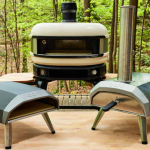How to Choose the Right Tools for Metal Polishing
When it comes to achieving a flawless, mirror-like finish on metal surfaces, selecting the right tools for metal polishing is crucial. Whether you’re restoring an antique brass lamp or preparing stainless steel components for industrial use, the tools you use will significantly impact the final result.
In this guide, we’ll explore the essential tools for metal polishing, their specific uses, and how to choose the best ones based on your project and the type of metal you’re working with.
Understanding the Basics of Metal Polishing
Metal polishing is the process of refining the surface of a metal object to improve its appearance, remove oxidation, and prevent corrosion. The process typically involves abrasives, buffing wheels, and polishing compounds.
There are three main stages:
• Cutting: Removing surface imperfections like scratches and pits.
• Coloring: Smoothing the surface and enhancing shine.
• Finishing: Applying the final polish for a mirror-like gloss.
Each stage may require different tools and techniques depending on the metal type and desired finish.
Essential Tools for Metal Polishing
To perform effective metal polishing, consider investing in the following tools:
1. Bench Grinder or Polishing Machine
Ideal for large or industrial jobs, a polishing machine with interchangeable buffing wheels provides consistent power and speed, making it easier to achieve a uniform finish.
2. Angle Grinder with Polishing Pads
Perfect for polishing flat surfaces and hard-to-reach areas. When fitted with the right disc or pad, angle grinders can handle both coarse and fine polishing.
3. Rotary Tool (Dremel)
Great for small objects or intricate details. Rotary tools can be fitted with miniature polishing bits, brushes, and wheels.
4. Buffing Wheels
Made from cotton, sisal, or felt, buffing wheels are used to apply compound and generate friction. Choose different grades for various stages of metal polishing.
5. Polishing Compounds
Each compound is formulated for different metals and polishing stages. For example:
• Emery compound for cutting steel.
• Tripoli compound for softer metals like aluminum.
• Jeweler’s rouge for final mirror finishes.
Choosing Tools Based on the Metal Type
Different metals require different approaches. Here’s how to tailor your metal polishing tools:
• Stainless Steel
Use a firm sisal wheel with a coarse compound to start, followed by a soft cotton wheel with a finishing polish.
• Aluminum
Aluminum is soft and prone to scratching. Use a soft wheel and fine polishing compound like Tripoli.
• Brass and Copper
These can tarnish easily. Use a medium-grade wheel and a rouge compound to restore their warm glow.
• Chrome
Chrome plating is delicate—use only soft buffs and light pressure to avoid damaging the surface.
Safety Tips for Metal Polishing
Working with power tools and abrasive compounds can be hazardous. Always follow these safety precautions:
• Wear safety goggles and gloves.
• Use a dust mask or respirator when working with compounds.
• Secure the workpiece before polishing.
• Keep long hair and loose clothing away from spinning tools.
Final Thoughts: Investing in the Right Metal Polishing Tools
Choosing the right tools for metal polishing isn’t just about buying the most expensive equipment—it’s about matching the right tool to your material, your polishing goals, and your level of experience.
Whether you’re a DIY enthusiast or a professional restorer, having the proper polishing wheels, compounds, and machines ensures efficiency, safety, and the best possible results.
For high-quality metal polishing services or to explore a wide range of professional tools, visit Doug Taylor Metal Polishing.











